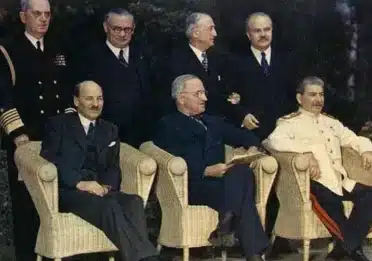Sámi-Germanic Harmony: History of Viking Echoes in Sweden
The history of Sweden is a captivating tale of cultural fusion and the blending of diverse influences. The journey begins with the Sámi people, the indigenous inhabitants of Sweden, who left a permanent mark on the northern regions of the country. As time progressed, the arrival of Germanic tribes brought new perspectives, traditions, and customs, culminating in a fascinating Sámi-Germanic cultural fusion.
This historical narrative explores the migration of Germanic tribes to the formation of early kingdoms, the emergence of a unified Swedish nation, and the continuity of Sámi-Germanic legacies, this journey represents the richness of Sweden’s cultural heritage.
💻 Table of Contents:
- From Sámi Origins to Swedish Identity: A Sámi-Germanic Cultural Fusion
- Germanic Tribes in Sweden: Exploring the Roots of Swedish Identity
- The Viking Age: The Seafaring Warriors of Scandinavia
- The High middle Ages: Fragmented Power and Spread of Christianity
- Gustav Vasa: The Leader of Swedish Liberation
- Conclusion: Political and Social Reforms in Sweden
 |
| Sámi Culture in Nature |
From Sámi Origins to Swedish Identity: A Sámi-Germanic Cultural Fusion
The Sámi people, also spelled Sámi, Saami, or traditionally known as Lapps, are an indigenous Finno-Ugric people inhabiting Sápmi, which today encompasses large northern parts of Norway, Sweden, Finland, and the Kola-Peninsula in Russia. They have their own languages and are known for their distinct cultural practices, including reindeer herding, fishing, and hunting. Historically, they have faced cultural assimilation and discrimination in the countries where they live, but in recent years, there has been a revival of Sami culture and increased recognition of their rights.
The Sámi people were the earliest known inhabitants of Sweden. Their presence can still be felt in Northern Sweden today, where they have preserved their cultural heritage. Migration of Germanic tribes to the region shaped the future Swedish ethnicity. Over centuries, the Sámi and Germanic populations interacted, fostering cultural exchanges and mutual influences. The Germanic tribes brought their language, agricultural practices, and social structures, while the Sámi contributed their knowledge of the land, hunting techniques, and unique craftsmanship.
This fusion of cultures resulted in a diverse and embryonic society that merged elements of Sámi-Germanic heritage. The Sámi-Germanic cultural fusion shaped various aspects of Swedish life, including language, folklore, cuisine, and religious practices. The Sámi-Germanic
consolidation also influenced the political landscape of Sweden. As tribal communities transitioned into organized kingdoms, they incorporated both Sámi and Germanic elements into their governance systems and legal frameworks. It reflects the capacity of diverse peoples to coexist, exchange ideas, and forge a shared heritage that continues to thrive in modern-day Sweden.
Germanic Tribes in Sweden: Exploring the Roots of Swedish Identity
During the Migration Period (4th-6th centuries AD), several Germanic tribes migrated to what is now Sweden. The Visigoths and Ostrogoths, two branches of the Goths, are believed to have settled in parts of present-day Sweden. The Visigoths migrated to the Iberian Peninsula, while the Ostrogoths ventured into Italy.
 |
| Vikings in Art |
The Geats (Götar in Swedish) were a Germanic tribe that inhabited the southern regions of Sweden, including Götaland. They played a significant role in the early formation of the Swedish state. The Swedes, also known as the Svear in Swedish, are a Germanic ethnic group that settled in central Sweden, particularly in the region of Svealand. With a population of over 9.5 million, ethnic Swedes are the largest ethnic group in Sweden.
They are of Germanic descent and closely related to other Scandinavian peoples, including those in Norway and Denmark. While not settling directly in Sweden, the Angles were a Germanic tribe believed to have originated in what is now Denmark and Northern Germany. They later migrated to the British Isles, where their name became associated with England (Angle-land).
These Germanic tribes, through their presence and interactions, played a crucial role in shaping the early ethnic and cultural foundations of Sweden. Over time, their influences combined with
the indigenous Sámi population and other groups, contributing to the rich tapestry of Swedish history and identity.
As the Swedish ethnicity developed, the people organized themselves into tribes and later into small kingdoms. These early political entities laid the foundation for the future Swedish state and its influence in the region. Through exploration, conquest, and alliances, the Swedish people expanded their territories and consolidated their power. This process contributed to the growth of a unified Swedish nation, with a shared language, culture, and identity. The Swedish people take pride in their diverse heritage, celebrating both their ancient roots and their more recent historical developments.
The Viking Age: The Seafaring Warriors of Scandinavia
The Vikings were seafaring people from Scandinavia, which includes Denmark, Norway, and Sweden. They were primarily Norsemen, a branch of the Germanic peoples who spoke Old Norse, a Germanic language (Old Norse, Old English, Old High German, Old Saxon, and others). They inhabited various regions of Northern Europe during ancient and medieval times.
💻 You May Also Like:
- The Wola Massacre: Unveiling a Forgotten Tragedy
- The Germanic Struggle for Unity: A Historical Odyssey
- German East Africa: A Window into the History of Tanzania and the British Part
- The Holy Roman Empire: A Thousand-Year Journey
They were known for their excellent skills as sailors and warriors. From the late 8th to the late 11th centuries, they raided, traded, and settled across Europe, reaching places like the Mediterranean, North Africa, the Middle East, Greenland, and Vinland (now Newfoundland in Canada). The term “Viking” refers not only to the raiders but also to the people living in Scandinavia. And this era is known as the Viking Age (793–1066 CE).
They sailed their strong ships to faraway lands, like England and Scotland, to explore, trade, and sometimes even raid. These journeys were called Viking Expeditions. The Vikings were very good at navigating the seas and had a reputation for being fierce warriors. Some experts think Vikings might have found North America about 500 years before Christopher Columbus.
The High middle Ages: Fragmented Power and Spread of Christianity
After the Viking Age, Sweden went through several significant developments and transformations leading up to its involvement in the Kalmar Union. During the High Middle Ages (AD 1000 to 1300) in Sweden, there was no strong central authority or a fully centralized monarchy. Instead, Sweden was divided into several regional territories, each ruled by its own local king or jarl (earl).
These regional kings or jarls held considerable power and influence within their respective territories. They often engaged in conflicts and power struggles among themselves, vying for control over larger areas of Sweden. This decentralized political structure meant that there was no unified and centralized authority governing the entire country.
Christianity began to take hold in Sweden during the High Middle Ages. While the process of Christianization started earlier with missionaries from other parts of Europe, it was during this period that Sweden’s conversion to Christianity became firmly established.
King Erik the Saint played a significant role in this process as well. He invited Christian Missionaries, particularly from Germany, to Sweden and supported their efforts to convert the population. The introduction of Christianity brought about changes in religious practices, the establishment of churches and monasteries, and the integration of Sweden into the wider Christian World.
It was during and after the High Middle Ages that efforts were made to consolidate power and establish a more centralized monarchy in Sweden. The process of centralization continued in the following centuries, leading to the eventual establishment of a stronger central authority under the rule of Gustav Vasa in the 16th century.
Gustav Vasa: The Leader of Swedish Liberation
The Kalmar Union was a historical political union that brought together several Nordic countries during the late medieval period. It was formed in 1397, united the three Scandinavian kingdoms of Denmark, Norway, and Sweden under a single monarch. Denmark, being the dominant partner in the union, exerted control over Sweden. Swedish nobles and commoners grew increasingly dissatisfied with Danish rule, which they perceived as oppressive and limiting their autonomy. This discontent led to a series of rebellions and uprisings in Sweden.
The Swedish leader who first rebelled against the Kalmar Union was Gustav Vasa. Gustav Vasa played a crucial role in the Swedish War of Liberation (1521–1523), which aimed to free Sweden from the dominance of the Kalmar Union. In 1523, Gustav Vasa successfully led a rebellion against the union’s authority, marking the end of the Kalmar Union and establishing Sweden as an independent kingdom.
 |
| Gustav Vasa |
After the rebellion, Gustav Vasa became the first monarch of the Vasa dynasty and became the First King of Sovereign Sweden. His reign marked the beginning of the Vasa dynasty and an important turning point in Swedish history. Under his rule, Gustav Vasa worked to strengthen Sweden’s political and economic independence, implementing reforms and establishing a centralized monarchy. Gustav Vasa is subsequently recognized as the founder of modern Sweden and the title of the “father of the nation.”
The war in Sweden brought freedom from foreign influences and enemies, leading to independence that has lasted for 500 years. Since 1523, Sweden has enjoyed local security and peace, with no foreign armies on its soil, except in border areas. For over 200 years since 1814, there has been general peace. This war is highly respected by Swedes as the basis for their political and economic independence, shaping the structure and organization of society today. It is seen as a significant turning point that radically changed the foundations of Swedish society and continues to be the case.
Conclusion: Political and Social Reforms in Sweden
Sweden’s history represents how the union of diverse cultures contributed to its strength. The consolidation of Sámi-Germanic traditions, united with the adventures of Viking voyages, formed the foundation of Swedish identity by blending local customs with Germanic influences. Gustav Vasa’s uprising against the Kalmar Union marked a pivotal stage, securing Sweden’s independence and paving the way for centuries of self-governance in politics and economics.
The 18th century saw Sweden embracing political and social reforms, transitioning towards a constitutional monarchy. The Napoleonic era brought challenges, but Sweden managed to maintain its neutrality. In the 19th century, industrialization spurred economic growth, leading to a modernization of Swedish society.
The 20th century witnessed Sweden navigating through the two World Wars with a policy of neutrality. Post-war, Sweden experienced a remarkable social welfare expansion, establishing itself as a model for the welfare state. This period also saw Sweden engaging in diplomacy and contributing to international organizations.
Late 20th-century Sweden became a global economic player with a strong emphasis on innovation and technology. The nation maintained its commitment to social equality and environmental sustainability. Sweden’s neutrality continued during the Cold War, allowing it to prosper economically.
In the contemporary world stage, Sweden is recognized as a leader in innovation, sustainability, and diplomacy. Its forward-thinking policies, commitment to environmental conservation, and contributions to global initiatives position Sweden as a dynamic force for positive development.
Frequently Asked Questions and Answers
The Sami are an indigenous Finno-Ugric people living in northern Norway, Sweden, Finland, and Russia’s Kola Peninsula. They have distinct languages and cultural traditions, including reindeer herding, fishing, and hunting.
Swedes are a Germanic ethnic group originating from central Sweden, particularly the Svealand region. They are closely related to other Scandinavian peoples in Norway and Denmark.
The Vikings were Norse seafarers from Denmark, Norway, and Sweden. They were part of the Germanic peoples and spoke Old Norse, a language related to Old English and Old High German.
Christianity took hold in Sweden during the High Middle Ages, with earlier missionary efforts paving the way for the country's full conversion.
Gustav Vasa, the first king of the Vasa dynasty, is considered the father of modern Sweden. He centralized power and strengthened Sweden’s independence. Who are the Sami people?
What race are Swedes?
What race were the Vikings?
When did Christianity come to Sweden?
Who is the father of modern Sweden?









